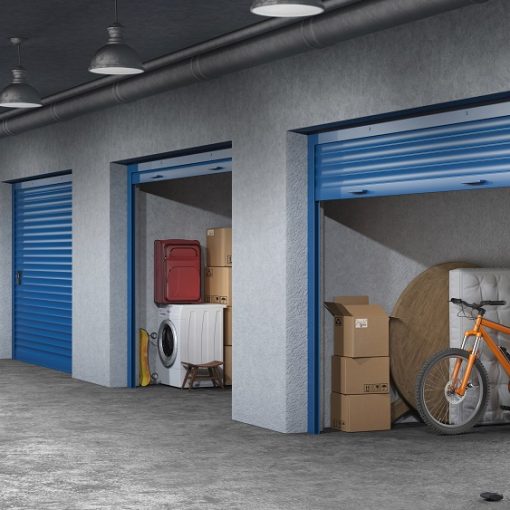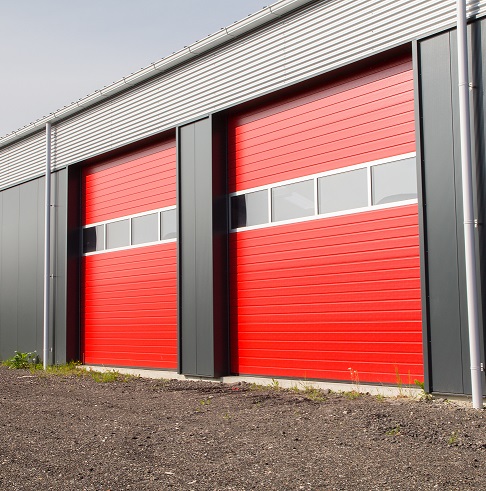Long-term furniture storage can go wrong if you’re not careful. Wood can warp, fabric can grow mold, and metal can rust. Therefore, knowing how to properly prepare and store your items can save you time, money, and frustration later on. In other words, the way you store your furniture makes a big difference in how well it holds up.
This guide breaks down everything you need to know to protect your furniture over time. Whether you’re moving, renovating, or simply making space, these steps will help ensure your pieces come out of storage in good shape.
Choose the Right Storage Conditions
Furniture doesn’t like extreme temperatures or moisture. That is to say, storing items in an environment that’s too hot, too cold, or too humid can lead to cracking, swelling, or mold. For instance, leather can dry out and peel, while wood can warp or split if conditions fluctuate.
To prevent these issues, climate-controlled spaces are a smart choice. These units maintain steady temperature and humidity, which means your items are less likely to suffer long-term damage. Moreover, storing furniture in a clean, well-ventilated area also keeps dust and mildew away. When looking into self storage in Calgary, prioritize units that offer stable indoor environments and protection from outdoor elements.
Clean Every Piece Before Storing
Dirt, oil, and food particles might not seem like a big deal now. However, they can attract pests or lead to stains that set over time. Therefore, it’s essential to give your furniture a full clean before it goes into storage. For wooden furniture, use a damp cloth and a gentle wood cleaner. In addition, applying a coat of wax or polish can create a barrier against moisture.
Upholstered items need a bit more care. Vacuum all surfaces thoroughly, including cushions and crevices. To clarify, this helps remove dust, allergens, and hidden crumbs. Fabric-safe cleaners are also helpful for spot-treating stains before they have time to settle in. If you’re unsure about a cleaning product, test it on a small hidden area first. Likewise, metal pieces should be wiped down and treated with a rust-prevention product if they’re prone to corrosion.
Disassemble Larger Items
Moving and storing furniture becomes much easier when you take it apart. Bed frames, tables, and shelving units are great candidates for disassembly. In other words, fewer bulky shapes means less chance of something getting scratched or snapped. Moreover, disassembled furniture takes up less space and is easier to stack or position securely.
Label all hardware and store it in a clear plastic bag. Tape this bag directly to the furniture or keep it in a small box where you store all screws, bolts, and tools. Most importantly, avoid forcing anything that doesn’t want to come apart easily. For instance, over-tightening or prying can cause damage that won’t be easy to repair later. If you’re unsure how a piece comes apart, look for an online manual or diagram before attempting.
Cover Furniture the Right Way
Throwing a plastic tarp over your sofa might seem like a good idea. However, plastic traps moisture, and that can lead to mold and mildew. Instead, use breathable materials like cotton sheets, moving blankets, or furniture covers. These allow airflow while still protecting against dust and scratches.
Most importantly, don’t wrap things too tightly. Air needs to circulate to prevent musty odors and condensation. For instance, if you’re covering a leather chair, loosely drape a sheet over it rather than sealing it in. Likewise, mattresses should be stored in special breathable covers to protect them from moisture while keeping them clean.
Elevate Furniture Off the Ground
Keeping your furniture directly on the floor can expose it to moisture or temperature changes. Therefore, placing your items on pallets, bricks, or boards can act as a barrier between your furniture and the ground. In addition, this helps promote airflow and discourages pests from nesting underneath.
This tip is especially important in units that don’t have temperature control. For example, even a clean concrete floor can hold onto cold or dampness, which might slowly seep into wooden legs or metal bases. Similarly, rugs and fabric-covered items should never rest directly on the ground. Lifting them just a few inches can make a long-term difference.
Pack Smart and Avoid Stacking Heavy Items
Stacking might save space, but doing it carelessly can cause dents, cracks, or tipping. That is to say, furniture isn’t designed to carry the weight of other furniture for months at a time. Therefore, keep heavier pieces at the bottom and avoid placing anything sharp or unstable on top.
When in doubt, store items vertically if the shape allows. For example, leaning mattresses upright or placing headboards against a wall can prevent warping. Likewise, avoid storing furniture too tightly. Squeezing everything into a small space can lead to unnecessary pressure and make retrieving your items harder later.
Don’t Forget About Pests
Even in clean storage units, pests can sometimes sneak in. Consequently, protecting your furniture from rodents and insects is just as important as protecting it from moisture. Start by avoiding food residue of any kind. For instance, don’t store kitchen furniture without checking drawers or shelves for crumbs.
You can also use natural deterrents like cedar blocks or lavender sachets. These smell pleasant to humans but help repel bugs. Likewise, checking your items regularly, especially in the first few weeks, can catch any early signs of an issue. If you’re worried about infestations, consult your storage provider to see how they prevent and respond to pest problems.
Check In Periodically
Out of sight shouldn’t mean out of mind. That is to say, checking on your furniture now and then is a smart habit. This allows you to spot early signs of damage or shifts in humidity. For example, if you notice condensation or mildew smells, you can improve airflow or adjust coverings as needed.
Some people visit their storage unit every few months, especially during seasonal changes. Moreover, it gives you a chance to move items slightly, clean up dust, and confirm that everything is still secure. If you’re using self storage in Calgary, local access makes it easy to pop in when needed without making a big trip.
Think About Insurance
While many storage facilities have security systems, your personal property is still your responsibility. Therefore, it’s a good idea to look into insurance options that cover your furniture during storage. Some renter’s or homeowner’s insurance policies already include this. However, double-checking the terms ensures you’re protected in case of water damage, fire, or theft.
In some cases, storage facilities also offer coverage at an additional cost. To clarify, this can be helpful if you’re storing higher-value items. Knowing you’re insured can give you peace of mind and reduce stress if something unexpected happens.
Don’t Skip the Small Details
Little actions can go a long way in long-term storage. For instance, placing small silica gel packs in drawers or storage bins can reduce moisture. Similarly, leaving drawers slightly open helps with air circulation and prevents that stale smell. In addition, make sure electronics that are stored inside furniture (like in desks or TV stands) are removed and stored separately.
Avoid leaning items on upholstered furniture. That pressure, even if light, can leave permanent marks. Likewise, remove cushions and store them separately in clean, breathable bags. These small steps add up and often separate a clean return from a frustrating surprise.
Ask Questions Before You Store
Before finalizing any storage plan, talk to someone who knows the facility. Ask about climate control, pest management, and security. Additionally, find out what their cleaning schedule looks like and if they allow visits during off-hours. When comparing options, you can also check the unit pricing using storage rates for different sizes.
If something feels unclear, don’t assume. For instance, ask whether your unit has ground-floor access if you’re moving heavy items. Similarly, ask if certain materials need special handling. Clear answers now save trouble later, and most storage companies are happy to walk you through what to expect. If you’re ready to set up a unit, the contact us page is where you can get direct help.
FAQs
What is the best way to prepare a wood table for storage?
Clean it thoroughly, apply a layer of furniture wax, and cover it with a breathable cloth. Disassemble if possible and store it off the ground to prevent warping or moisture damage.
Can I store furniture with drawers closed?
It’s better to leave drawers slightly open. This allows air circulation and reduces the risk of stale odors or mold forming inside enclosed spaces.
Is climate-controlled storage necessary for furniture?
While not always required, it is strongly recommended for long-term storage. Stable temperature and humidity protect wood, leather, and fabrics from damage over time.
How do I know if a unit is safe from pests?
Look for signs like sealed walls, clean surroundings, and active pest control policies. You can also ask the facility how they handle pest prevention and monitoring.
Should I use plastic wrap to protect furniture?
Avoid plastic wrap unless it’s specifically made for furniture. Most plastic traps moisture. Breathable covers like cotton sheets are a safer choice.




